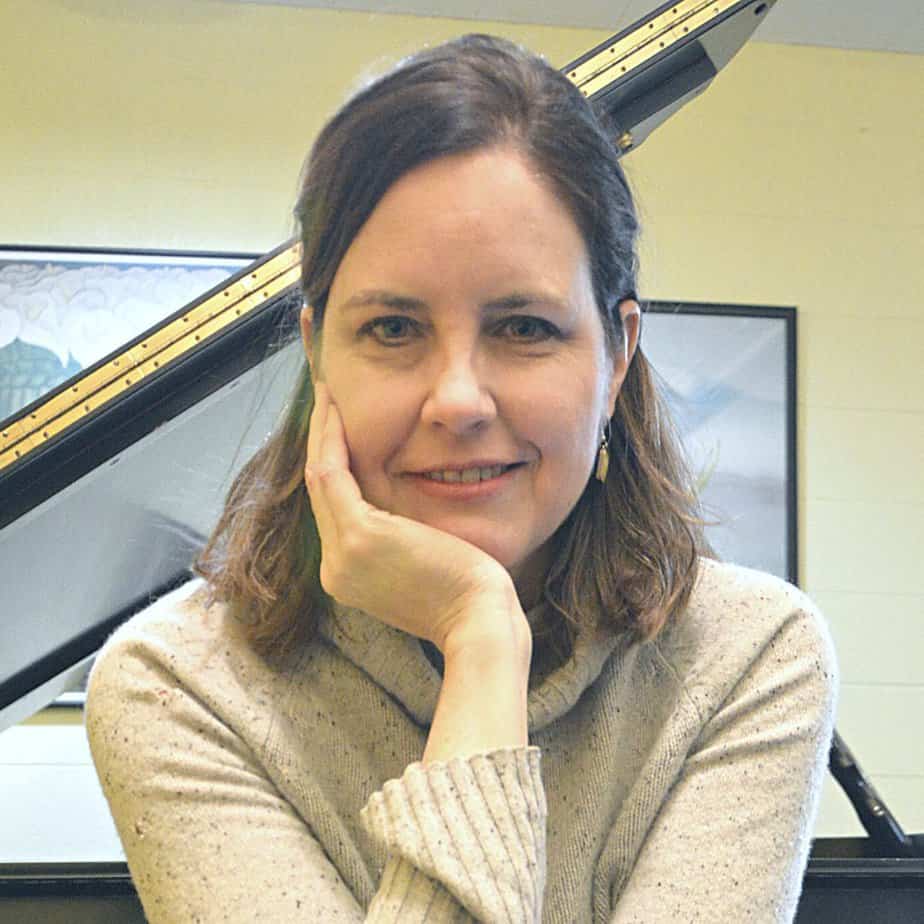Dear Friends,
I’m sending this on a Monday instead of my usual Sunday – but better late than never! 😅
Before we get started, I want to let you know that Butler University’s Piano Camp is happening June 16-20, and this year, Chopin is our featured composer!
Camp will take place in Indianapolis at Butler University for pianists ages 12-18. We will offer private lessons, performance opportunities, ensembles, movement and theory classes, and more. If you, your students, or a young pianist you know is interested in a week of immersive music-making, including private lessons, ensemble work, and performance opportunities, I’d love to see them there!
Please note that this year camp will be for commuters only. However, in the past, some students have come with a parent and stayed locally – there are many accommodation options near campus.
Now let’s talk about variable practice!
Lately, I’ve been reading Learn Faster, Perform Better by Molly Gebrian, an incredibly informative book about the neuroscience of practicing. In this book, Dr. Gebrian looks at various practice techniques and describes the scientific research that explains why they do or don’t work.
One issue many pianists struggle with is mindless repetition: playing something over and over without real engagement.
Students often tell me how easy it is to “zone out” while they’re practicing; they get into a mode of just playing their pieces over and over, without really understanding why they’re doing it or what to do next. (Sound familiar?)
We know that repetition is needed to solidify note-learning and improve skill at the instrument, but repeating mindlessly can actually be counterproductive! Without giving something our full attention and making it engaging for ourselves, we risk reinforcing mistakes or wasting our time, rather than building true mastery.
In her book, Gebrian discusses variable practice, the idea that intentionally changing how you repeat something, rather than trying to play it exactly the same way every time, leads to stronger learning and retention. This concept has always made intuitive sense to me, and in both my own practice and teaching I encourage students to introduce variations. For example:
- Play a passage legato, then staccato
- Vary the dynamics: soft, then loud
- Play “opposite” dynamics of what is written in the score (piano instead of forte, etc)
- Play a section silently on the keys, moving the fingers and hearing the music in your head
- Practice with rhythmic variations
An interesting study Gebrian mentions involved children throwing bean bags at targets. One group practiced with a single weighted bean bag, throwing consistently from the same distance, while another used bean bags of different weights, throwing different distances. The second group, who experienced more variability, performed better when tested. The same principle applies to music: our brains learn more deeply when we experience a skill in multiple ways.
I’ve been applying this approach myself as I work on Fanny Mendelssohn’s “August” fromDas Jahr. I already know the notes, but it’s a very fast and virtuosic piece; I’ve been using variable practice to solidify the piece as I learn it.
Variable practice is most useful when you already know a piece pretty well. In the early stages of learning, it’s best to repeat it the same way in order to establish consistency first, but once you can play the notes and rhythms at a reasonable tempo, adding variations to the way you practice can help you internalize and solidify the piece better.
So the next time you’re practicing a passage you already know, try mixing it up! Your brain (and your playing) will thank you.
👋 Have a great week! Happy practicing! 🎹
-Kate
Practice TIP of the week:
Each week’s practice tip follows a monthly theme. This month’s theme is Rhythm & Timing.
In case you missed them, here are last month’s tips:
🎵 Feb 2: Seamless Legato
🎵 Feb 9: Playing Crisp Staccato
🎵 Feb 16: Playing Effective Accents
Today’s Practice Tip: Feeling the Pulse
Many students struggle with feeling the “pulse” of the music when they play. Not feeling a consistent pulse can make your rhythm feel unsteady or irregular. But what exactly is the pulse in music?
The word “pulse” in music relates to how your heartbeat creates a rhythmic pulse in your body. In music, “pulse” is the steady underlying beat that gives music its sense of motion: the musical “heartbeat” that stays constant even as rhythms and notes change. Feeling the pulse viscerally, rather than just counting beats intellectually, is what helps you play with rhythmic stability and musical flow.
Here are two exercises to strengthen your sense of pulse:
1. Walk the Pulse (Away from the Piano)
- Stand up and start marching or walking purposefully in place or in a small circle.
- While stepping at a steady pace (quarter notes), clap eighth notes.
- Continue to walk steady quarter notes, and switch between clapping eighth notes and triplets to feel how they relate to the pulse.
- Pay attention to how the triplets fit within the same steady beat: this helps internalize rhythmic subdivisions.
2. Step the Pulse While Playing (At the Piano)
- Sit at the piano and lift each foot fully as if walking in place (don’t just tap your heel or toe).
- As you play, step in time with the beat – step steady quarter notes, for example, as you play your piece with all the correct rhythms on the piano.
- This physical connection to the pulse helps anchor your playing and prevents rushing or dragging.
Both of these exercises train your body to feel rhythm naturally, reinforcing a strong internal pulse. Try them out and see how they improve your rhythmic stability!
🎥 YouTube Update
My most recent YouTube video is called “Understanding Half-Pedaling: Why Full Pedal is NOT always the Answer!”
A lot of piano student have questions about half pedaling, which is an often overlooked pedal technique. In the video I break down the mechanics of the damper (sustain) pedal and demonstrate how to control your pedaling to create beautiful colors. You can check it out here!
My next video will be coming out later this week. It’s in response to many questions I have received about how to how to structure your practice time.
💜 Some of My Favorite Things
- Performance 🎶: This past weekend, Joyce Yang played Prokofiev’s Third Piano Concerto with the Indianapolis Symphony Orchestra. It was dazzling!! She also gave a wonderful masterclass to my piano students at Butler University. Here is an exciting performance of Joyce Yang playing Rachmaninoff’s Rhapsody on a Theme of Paganini.
- Article 📰: This is a fascinating article about Paderewski’s two American tours in 1891-1893. For the first tour, he played 107 concerts in 117 days, despite sustaining a hand injury! It’s also a snapshot of the American piano industry of the time, describing the ascent of the Steinway company and the fierce competition between different piano manufacturers.
- Book 📚: Grand Obsession by Perri Knize is a captivating memoir of one woman’s relentless pursuit of the perfect piano sound. What begins as a midlife passion for the instrument turns into an extraordinary journey through the hidden world of piano makers, tuners, and musicians, as she fights to restore the “magic” of the grand piano she fell in love with. Buy it on Kindle, paperback, or hardcover. Check out my other book recommendations here!
Stay Connected:
- 📆 Book a lesson or a coaching session with me. I have updated my available dates through the end of April!
- 🎓 Contact me to learn about applying to study with me at Butler University at the undergraduate or master’s level. Go Dawgs! 🐾
- 📚 Check out my resource pages, where I share my recommended books, technical exercises, gear and more!
- 🎥 Subscribe to my YouTube channel!
- 📱Follow me on Instagram!

